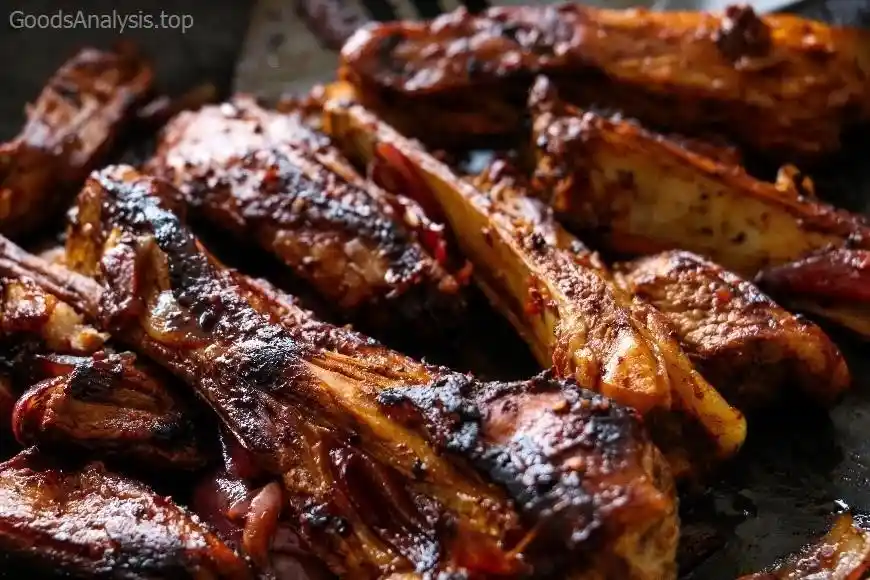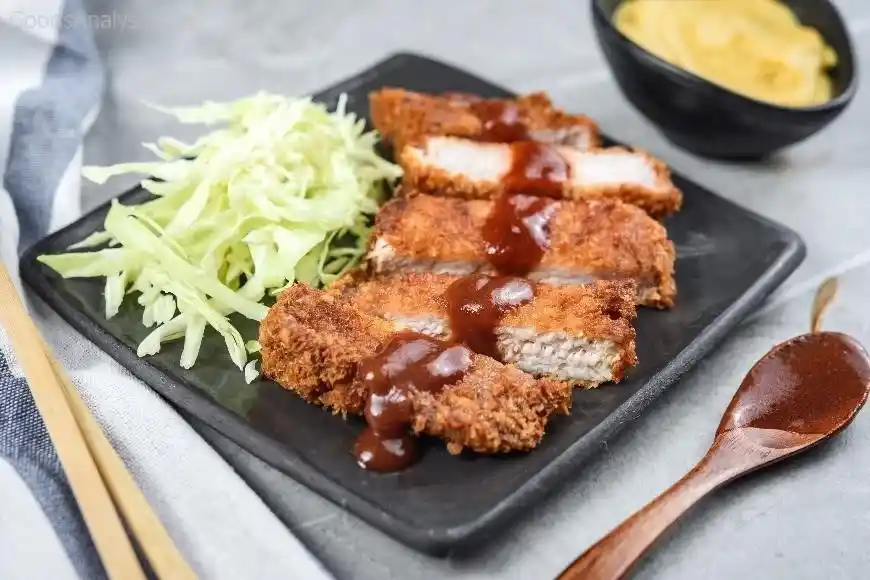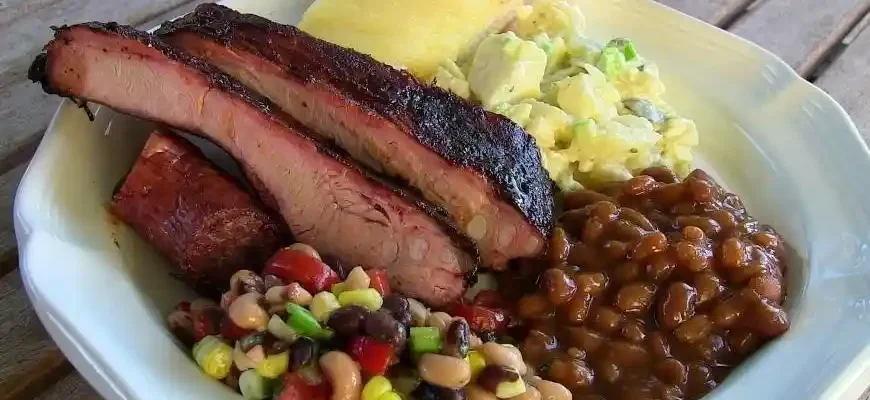Pork chops—whether grilled, baked, pan-fried, or slow-cooked—are a delicious and versatile cut of meat that can be enjoyed in a variety of ways. If you’re like many people, pork chops probably bring to mind a simple, classic meal, but there’s so much more to this humble dish than you might think. As someone who’s spent decades in the kitchen, I’ll walk you through the essentials of cooking pork chops, drawing from research, science, and personal experience. Whether you’re a novice or an experienced cook, there’s something here for you.
What Are Pork Chops?
Pork chops are cuts of meat from the pork loin, which is located along the back of the pig. Depending on where the chop is taken, it can be bone-in or boneless, and the cut can vary in thickness. The most common types are:
- Rib chops – Tender and flavorful, cut from the rib section.
- Loin chops – Lean, typically from the center part of the loin.
- Sirloin chops – A bit tougher but still great for grilling.
- Blade chops – A flavorful option that includes some shoulder meat.
When it comes to cooking, bone-in pork chops tend to retain moisture better, making them more forgiving. Boneless chops, while quicker to cook, can sometimes turn out dry if not properly prepared.
How to Cook Pork Chops Perfectly Every Time
There are several ways to cook pork chops, each bringing out different flavors and textures. Let’s break down the most common methods, and I’ll give you some tips on how to avoid common pitfalls.
1. Pan-Frying Pork Chops
Pan-frying is probably the most popular and fastest method. Here’s how to do it:
- Preparation: Season your pork chops with salt, pepper, and any other spices you enjoy. I recommend using garlic powder, onion powder, paprika, or even a bit of brown sugar for sweetness. If you have time, let the chops marinate for at least 30 minutes to an hour.
- Cooking: Heat a skillet over medium-high heat and add a tablespoon or two of oil (vegetable, canola, or a bit of butter works well). When the oil is hot, add the pork chops and cook for about 3-5 minutes per side, depending on thickness. You want a nice golden-brown crust, but don’t be too hasty. Turn the heat down to medium if the chops are browning too quickly.
- Tip: Use a meat thermometer. Pork should be cooked to 145°F (63°C) at the center. Let the pork rest for at least three minutes before serving to allow the juices to redistribute.

2. Grilling Pork Chops
Grilling adds a smoky flavor that’s hard to beat, especially in the warmer months. Here’s how to do it:
- Preparation: Season the chops or marinate them in a mixture of olive oil, vinegar, garlic, and herbs. For a delicious twist, try a dry rub with brown sugar, paprika, salt, and pepper.
- Cooking: Preheat your grill to medium-high heat. Place the pork chops on the grill and cook for about 4-5 minutes per side, again depending on thickness. If you’re using bone-in chops, check for an internal temperature of 145°F (63°C) before removing from the grill.
- Tip: Make sure your grill is clean and oiled to prevent the meat from sticking. For those extra-grilled marks, resist the urge to move the meat around too much—let it sit for a bit.
3. Baking Pork Chops
Baking is a great way to ensure tender, juicy pork chops without much fuss. Here’s how:
- Preparation: Preheat the oven to 350°F (175°C). Season your pork chops and place them on a baking sheet. For extra flavor, you can sear them in a skillet for a couple of minutes per side before baking.
- Cooking: Bake for 25-30 minutes, or until the internal temperature reaches 145°F (63°C). For juicy chops, you can cover them loosely with aluminum foil while baking.
- Tip: For a crispy crust, broil the chops for the last 2-3 minutes of baking.
4. Slow Cooking Pork Chops
Slow cooking is perfect if you want tender, fall-apart pork chops. The longer cooking time allows the flavors to really infuse the meat. Here’s how:

- Preparation: Season the pork chops and place them in a slow cooker. Add liquid—broth, wine, or even a can of cream of mushroom soup works well.
- Cooking: Cook on low for 6-8 hours or high for 3-4 hours. Once done, the pork should be fork-tender.
- Tip: Because slow cooking draws out moisture, it’s best to use bone-in chops, which have a bit more fat to keep things juicy.
5. Sous Vide Pork Chops
Sous vide is the method for precision cooking, ensuring that pork chops are cooked to the exact doneness you desire.
- Preparation: Season your pork chops, then place them in a vacuum-sealed bag. Submerge the bag in water set to 140°F (60°C) for 1-2 hours.
- Cooking: After sous vide cooking, sear the chops in a hot pan for a minute or two on each side to develop a crust.
- Tip: This method is great for those who love perfectly cooked pork with no risk of overcooking. You’ll get an incredibly juicy, tender chop.
Common Mistakes to Avoid When Cooking Pork Chops
Even experienced cooks sometimes make the same mistakes with pork chops. Here are some of the most common issues, and how to fix them:
- Overcooking: Pork chops are best when cooked to an internal temperature of 145°F (63°C). Going beyond that can lead to dry, tough meat. Use a thermometer to be sure!
- Underseasoning: Don’t be afraid to get generous with your seasonings. Pork is a mild meat that benefits from bold flavors. Spice it up with garlic, herbs, and even a little sugar for balance.
- Not Letting the Meat Rest: After cooking, let your pork chops rest for a few minutes. This helps retain the juices, giving you a moist, flavorful chop.

Health Considerations
While pork can be part of a balanced diet, it’s important to consider a few health aspects:
- Fat Content: Pork chops, especially the fattier cuts, can be high in saturated fat. If you’re watching your fat intake, opt for leaner cuts like loin chops or trim visible fat before cooking.
- Food Safety: Make sure to cook pork to the right temperature. Undercooked pork can harbor bacteria like Trichinella, although this is rare in modern pork. Always use a thermometer to ensure the meat reaches at least 145°F (63°C).
Global Perspectives on Pork Chops
I’ve gathered some thoughts from people around the world on their experiences with cooking and eating pork chops:
- David (45, USA): “I grew up on pork chops, but I never knew there were so many ways to cook them! The slow cooker method has been a game-changer for me—it’s so simple, and the chops are super tender.”
- Maria (56, Spain): “In Spain, we often cook pork chops with a side of sautéed potatoes and a splash of white wine. The key is to make sure the pork has a nice crispy exterior while keeping the inside juicy.”
- Cheng (38, China): “In our family, pork is cooked with soy sauce and five-spice powder. The marinade is so important, as it gives the meat such depth of flavor.”
- Lina (25, Brazil): “Here, we love grilling pork chops, often with a side of rice and beans. I like them charred on the outside but still tender on the inside.”
- Ahmed (62, Egypt): “I prefer my pork chops slow-cooked with garlic, onion, and tomato sauce. It’s a hearty dish that reminds me of home.”
Conclusion
Cooking pork chops is an art, and whether you’re looking for a simple weekday meal or something to impress at a dinner party, there’s a method that’s perfect for you. From pan-frying to slow-cooking, there’s no shortage of ways to prepare this versatile meat. The key to success is seasoning well, cooking to the right temperature, and avoiding overcooking. Don’t be afraid to experiment with different seasonings and techniques—it’s the best way to discover your perfect pork chop.
Pork chops are more than just a meal; they’re a part of many cultural traditions and offer a delicious blank canvas for a variety of flavors. So get cooking and enjoy this timeless dish!









